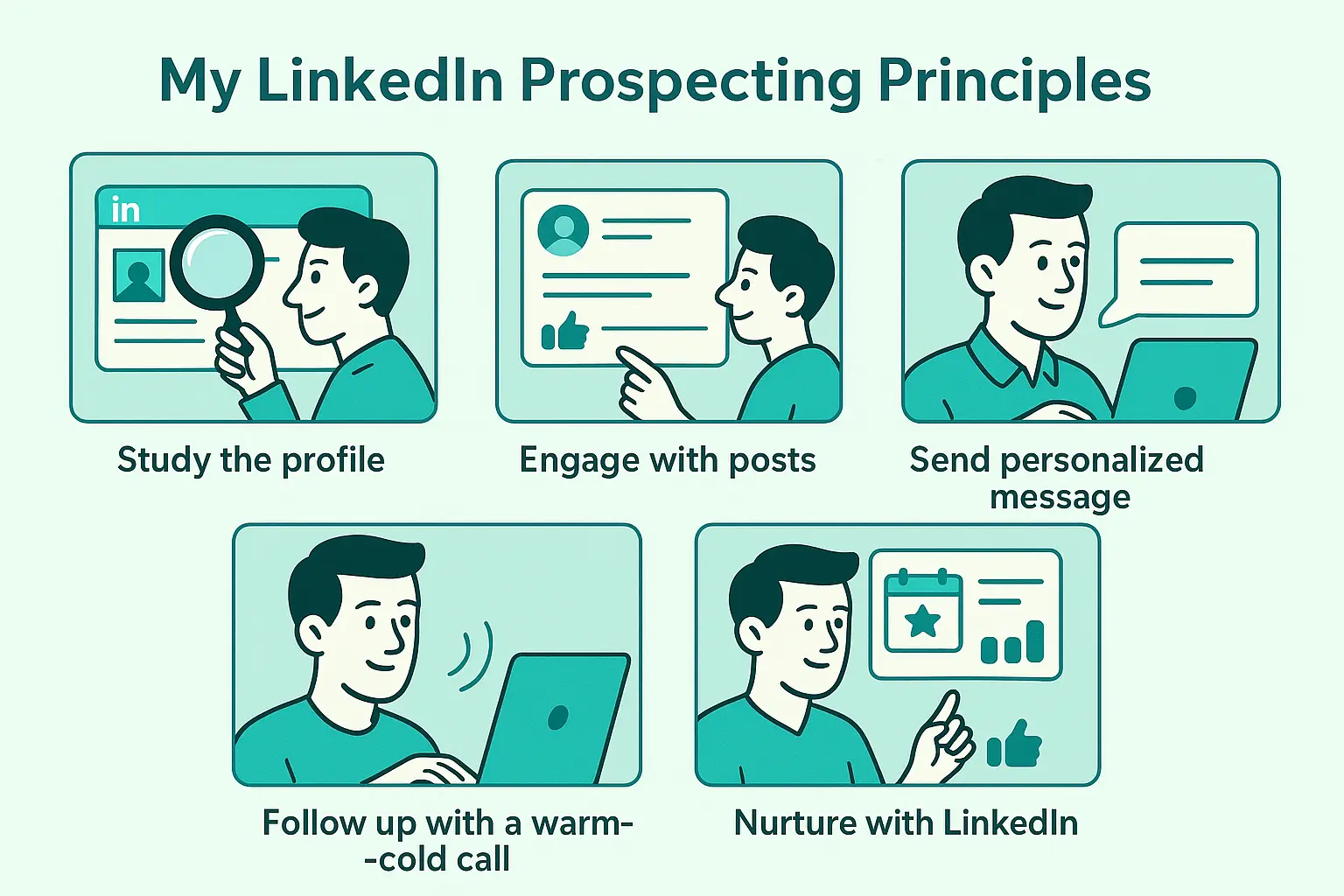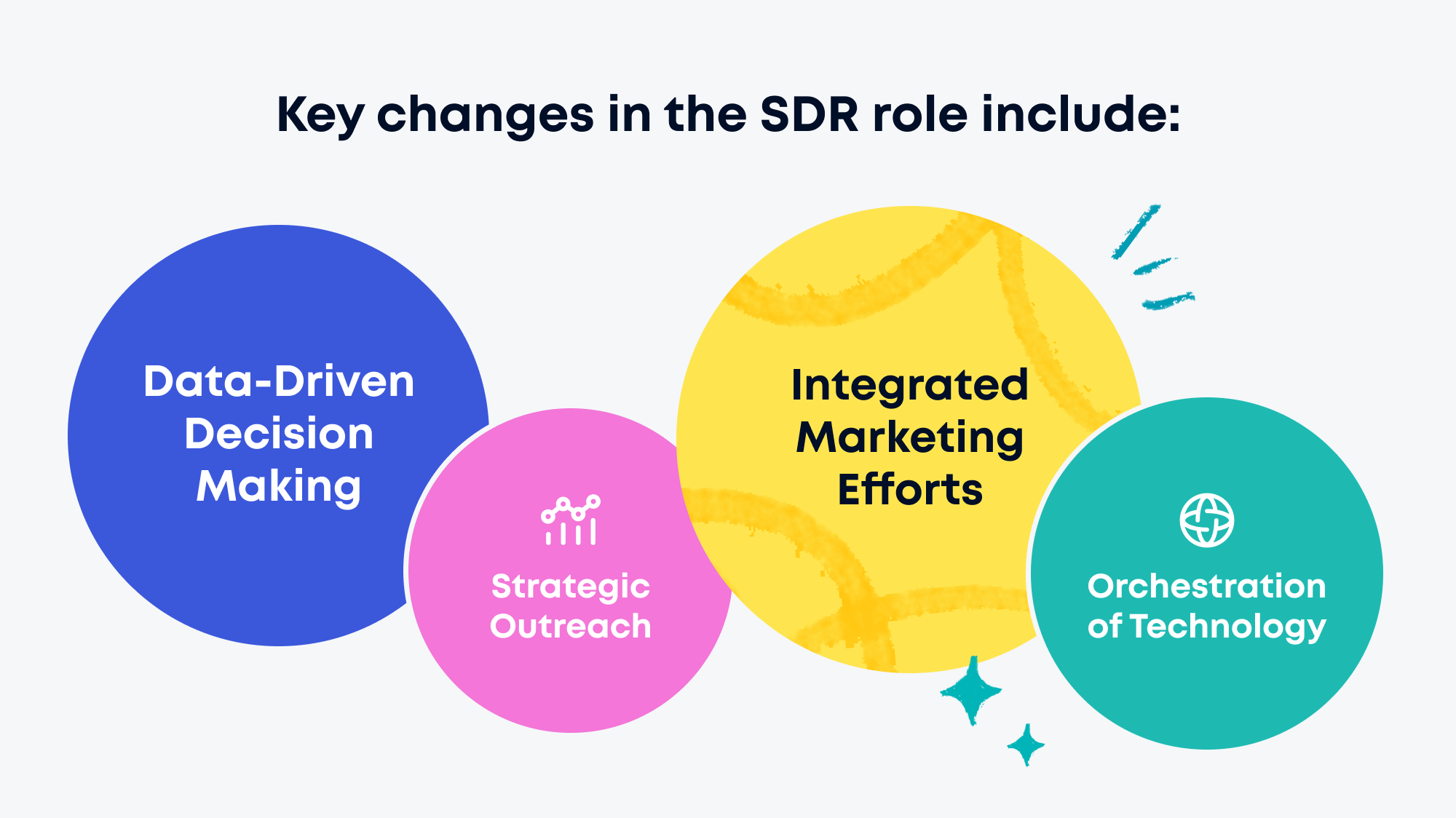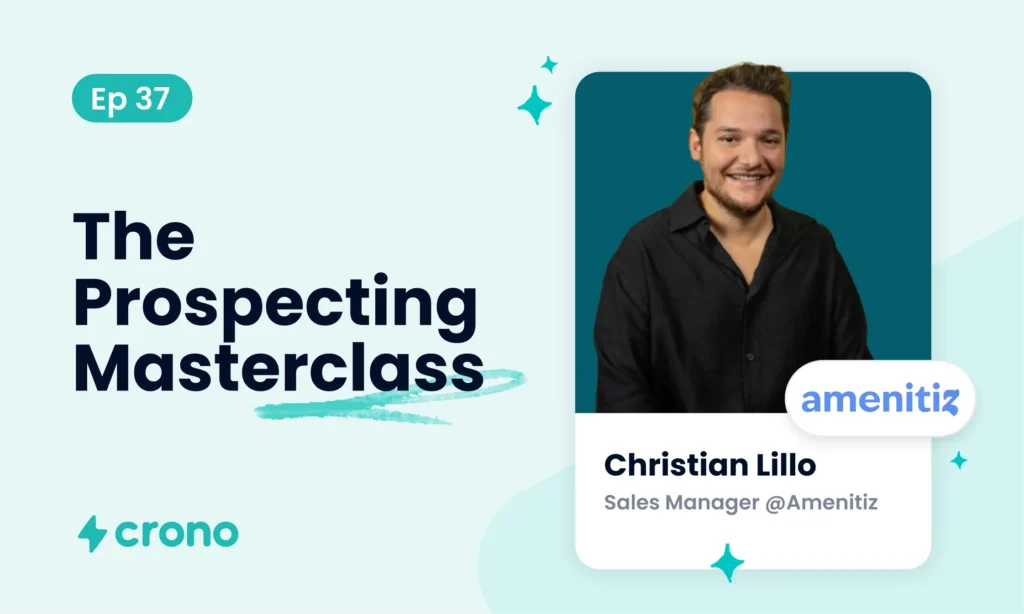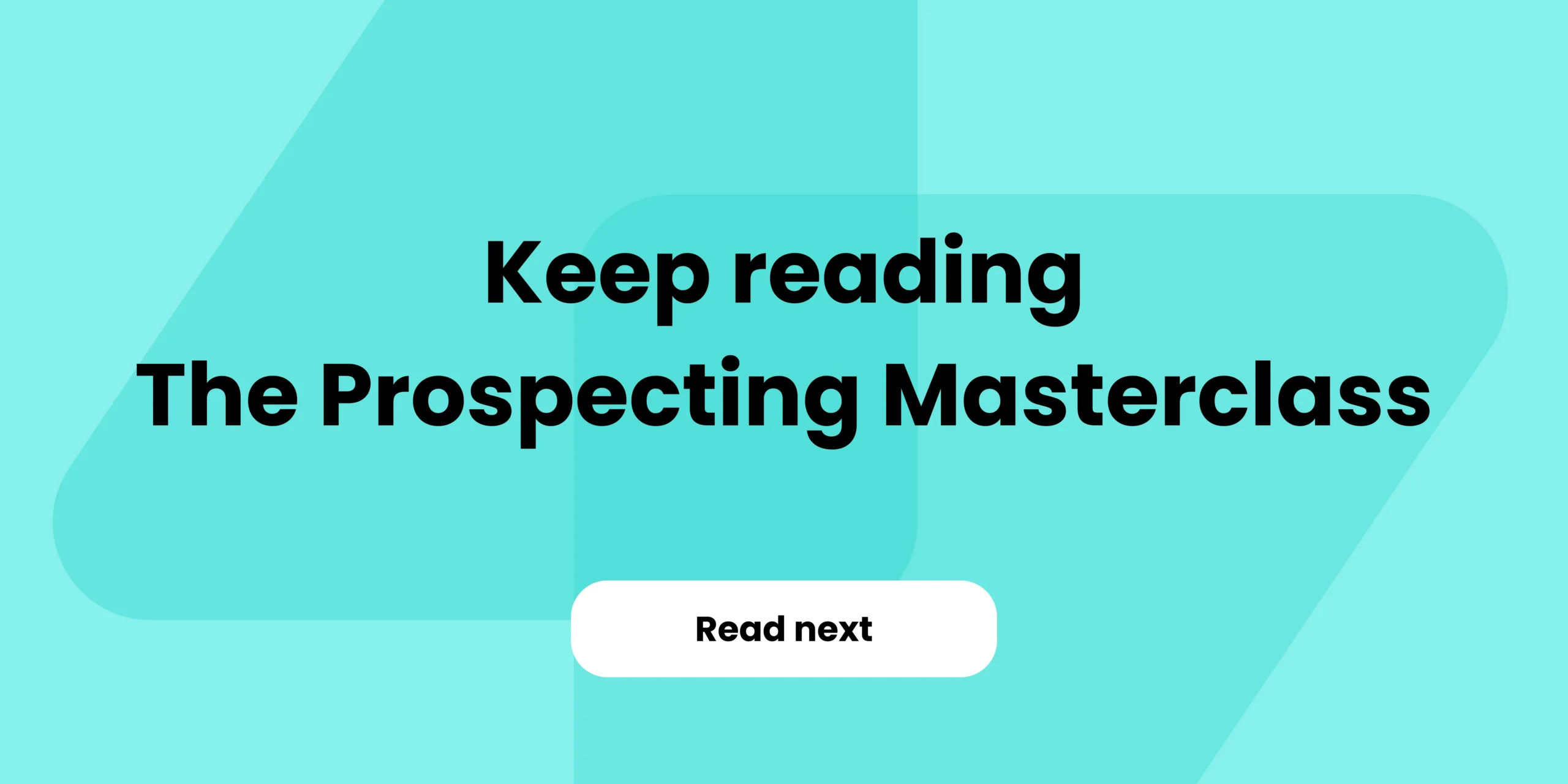Hey there Croners! Welcome back to The Prospecting Masterclass, the original Crono column that gives you insights and tips from the best minds in sales.
In this episode we have Christian Lillo, Sales Manager at Amenitiz.
We’ll go through his experience in sales, gathering insights and inspiration on how to do better. But also we’ll discuss the future of sales and how to be ahead of the curve.
Hey Christian, tell us about yourself: How did you end up in sales, and why do you still love it?
I ended up in sales by chance. I always joke that sales chose me, not the other way around.
At the beginning, I actually wanted to work in marketing for a big multinational. I imagined myself creating advertising campaigns for big consumer brands. I even started an internship in that field, but after three months, I decided to stop and focus on finishing my thesis.
I realized that spending eight or nine hours a day looking at spreadsheets wasn’t for me.
So, after graduating, I started looking for a job in a modern, innovative company, but also something more creative and flexible.
That’s when sales really clicked for me.
It’s probably the only office job where you’re not measured by the hours you sit at your desk, but by the results you bring. I loved and still love the freedom to manage my own time, be creative, and work almost like an entrepreneur.
Now we want some tips from you...
In an era where inboxes are flooded, how do you ensure your outreach stands out and gets noticed?
What tactics have proven effective in capturing and retaining a prospect’s attention?
After working for a couple of years in Milan in a multinational in the travel industry, I moved to Barcelona and got my first real SDR role.
It was at a multinational high-tech company that was trying to build a new kind of sales team focused on creative outreach. In fact, the role was originally called Digital Demand Executive instead of SDR, because the goal was to find prospects using creative, digital-first methods.
At the time, LinkedIn Sales Navigator was just starting to spread across Europe, and my company had even built internal multimedia studios to help reps create fun and engaging outreach videos. So from the very beginning, I was pushed to think creatively in my outreach, even if at first, I didn’t really understand how to make it work and often fell back on cold calling.
Later, especially when I joined LinkedIn and had to prospect during the pandemic, I really started to understand the power of doing things differently.
What works best for me today is starting from LinkedIn, but not just jumping into someone’s inbox straight away. I take time to study the person, understand how they think, how their company operates, and engage with their posts. Only after that I send a message, something super personalised and relevant to them, not just a copy-paste.
Because the truth is, I get a lot of sales messages myself, and it’s so obvious when they’re generic.
If you want to grab someone’s attention, the message needs to be personal, and it needs to add real value.

After that, if the LinkedIn message doesn’t get a reply, I follow up with a call , which I like to call a warm-cold call, because at that point, the person at least knows who I am.
How do you balance personalisation with scalability in your outreach efforts? Are there particular strategies or tools you employ to maintain relevance without sacrificing efficiency
I usually split my outreach strategy in two parts.
For about 5% of the accounts, the top targets I really want to win, I go all-in with deep personalisation. I study the people in the company, how they think, what they share, how they talk about their business. I focus on them because I know they’re a great fit, both in terms of deal size and product relevance.
For the other 95%, I still try to be as relevant as possible, but I use a more scalable approach.
In this case, I don’t personalise on the individual level, but more on the industry, the segment, or a specific pain point I know is common in that vertical. Often I base it on compelling events or market trends, and I create messaging that is tailored to those themes.
It’s not one-to-one personalisation, but it’s still very targeted and effective.
To keep this efficient, I use tools that help me automate repetitive tasks, for example, scheduling emails or setting up reminders to follow up with prospects. These tools allow me to maintain a healthy number of “touches” across channels, email, LinkedIn, calls without losing track of anything.
At the end of the day, the goal is to find the balance between being relevant and being efficient.
I don’t believe in pure automation or pure personalisation, it’s about building a system where you can scale thoughtful outreach while still making people feel like you’re speaking to them.
How do you incorporate social selling into your outbound strategy? What role does building an online presence play in your overall sales approach?
For me, social selling today is no longer a nice to have, it’s a must have for any modern sales strategy.
When I started in sales almost ten years ago, social selling wasn’t really a thing. It was just beginning. But now, especially after the pandemic, it has become essential.
Think about it: many salespeople today are remote and might not even live in the same country as the market they’re working in. So, building connections through digital channels is often the only way to develop that personal relationship with a prospect, something we used to do face-to-face.
That’s why social selling is so important.
But I think people often misunderstand what social selling really means. It’s not just about posting on LinkedIn or resharing your company’s content.
If that’s all you do, you’re just doing marketing. Social selling is different.
Selling means listening, identifying a need, and responding to that need. So social selling is about using digital tools to learn about your prospects, find out what matters to them, and then engage in a meaningful way. That could be a personalised message, a thoughtful comment on a post, or even creating content that speaks directly to your target audience.
At the end of the day, your LinkedIn network should reflect your prospect base. If your content isn’t speaking to them, with the right message, tone, and timing, then your social selling strategy isn’t working as it should.
And of course, in this context, building your personal online presence is key. Especially as more and more sales roles are remote, your online profile becomes your main business card, it’s how potential clients discover you, understand who you are, and decide whether they want to trust and talk to you.
In 2025, that presence is no longer optional, it’s your first impression.
And your take on the future of outbound sales: What shifts do you see coming fast in outbound sales — and which ones are already overdue?
When I think about the changes coming in outbound sales, my mind doesn’t go straight to AI just because it’s trendy, it’s because I’m already seeing it happen inside my company.
AI is starting to replace the early stages of the sales cycle, and honestly, these are usually the most repetitive and frustrating parts of the job.
So in the short term, I see a big shift toward automating these kinds of tasks, which will bring clear benefits for both companies and salespeople. For businesses, it means saving on headcount. And for reps, it’s a chance to move away from pure execution and step into more strategic roles.

I believe the SDR role will evolve, from being a “doer” that just sends emails and makes cold calls, to more of a controller of digital tools. There will always be a need for the human touch, creativity, and empathy, but many operational tasks will be handled by machines.
It reminds me of the old Charlie Chaplin films, when factories started replacing manual labor with machines.
People thought this would destroy jobs, but what actually happened is that workers evolved. They stopped doing exhausting, repetitive work and started operating and managing the machines. Their skills became more valuable. I think the same thing will happen in sales: SDRs won’t disappear, they’ll level up.
In this context, I also see that certain tasks and tools are quickly becoming outdated. For example, I remember spending hours researching articles or digging for insights about a company before writing a single message. Now, AI can do all of that in seconds. Even crafting and sending outreach emails, which used to take time and creativity, is being done faster and, in some cases, better by AI tools.
So, we don’t need to focus as much on those old skills. Instead, we need to develop new ones, like how to manage these tools properly, how to guide and correct them, and how to maximise their impact as part of our sales strategy.
What are the topics and skills sales teams should focus on to stay ahead of the curve?
As I mentioned before, AI will soon take over many of the operational tasks that SDRs currently spend a lot of time on.
If we simplify things, you could say that today an SDR’s role is 50% operational (writing emails, sending messages, managing tools) and 50% focused on human interaction, research, creativity, and empathy.
In the near future, that 50% operational part could shrink to maybe just 20%.
AI will handle much of that work but only if SDRs know how to manage these tools effectively.
So one of the key skills SDRs should develop now is technical literacy: learning how to use AI to their advantage.
My advice is: don’t wait. Start learning now. These tools will not only make your day-to-day work more efficient right away, but in the long term, they’ll be essential to stay competitive in the job market.
The remaining 80% of an SDR’s time will be focused on the things machines can’t do: the truly human side of sales. Things like understanding the market, building trust with prospects, being empathetic, creative, and thinking strategically.
And this is the exciting part: the SDR role will become more meaningful. Less about repetitive tasks, and more about real human value.
To be ready for this shift, SDRs need to develop two things:
Strong command of AI tools to manage the operational side quickly and effectively.
Deeper sales skills: soft skills, emotional intelligence, knowledge of the market and industry, and the ability to have impactful conversations.
That’s what the future of outbound looks like: a more skilled, more human, and more strategic salesforce powered by tech, but led by people.
What’s a channel or format most sales teams still sleep on — but you think will become standard soon?
That said, here are two things I think are still underestimated by many but could be powerful for more people if used right:
1. Treating LinkedIn as a real social network, not just a sales tool.
For me, LinkedIn isn’t just a place to copy-paste product updates or repost marketing content.
I see it as a space to build a personal narrative that aligns with the values behind what I sell. For example, if I work for a company that supports remote work, and I also believe in remote work, then I don’t need to talk directly about the product.
Instead, I can share personal stories, insights, and thoughts around the broader topic of remote work. This way, my audience starts associating me with that topic, and not just with a pitch. You become a kind of ambassador for the cause, not just a rep doing his job. And no, you don’t need thousands of followers.
It’s enough if your actual prospects see that you’re consistent and authentic. That builds credibility, and ultimately trust.
2. Using podcasting as a door-opener.
When I was an SDR, video prospecting was the big trend, and while I tried it, I never felt it was the best fit for me. What actually worked better was podcasting.
During the pandemic, I created a podcast where I interviewed CEOs about how they were navigating the crisis. It started from a place of personal curiosity, but it ended up being a great way to connect with decision-makers.
It gave me an excuse to talk to them, to learn from them, and to position myself, not as someone selling something, but as someone genuinely interested in their challenges.
That experience helped me build relationships, grow my personal brand, and open doors that a cold call or a LinkedIn message alone probably wouldn’t have.
So again, I’m not saying these two formats are for everyone but they worked for me. And I think if more salespeople took the time to figure out their unique angle or voice, they’d discover channels that make their outreach way more effective, because it would be real, human, and authentic

